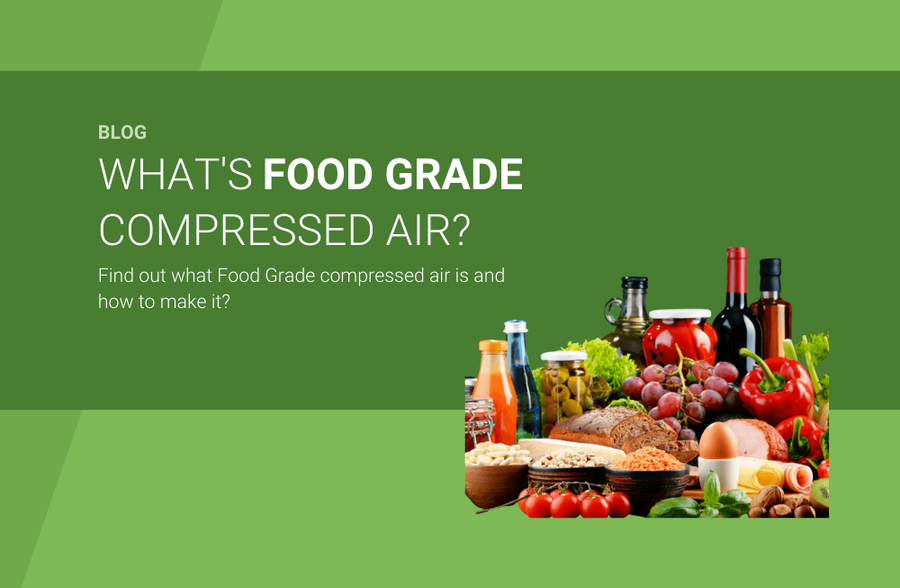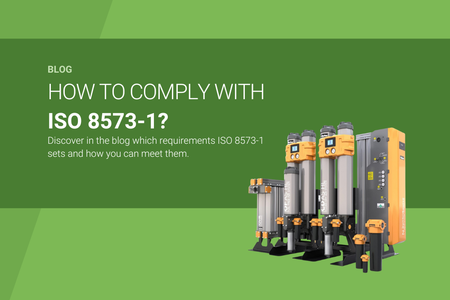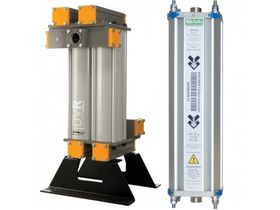
What types of food grade compressed air are there? How is food grade compressed air made? These are all questions we are happy to help you with. Through the information on this page, we provide answers to these and other questions about food grade compressed air.
-
What is food grade compressed air?
Food grade compressed air is air that does not contain harmful substances. It is air that has been cleaned through proper treatment. Because food grade compressed air is clean, it can be used in the food industry. -
When is compressed air considered food grade?
Compressed air is considered food grade when it is free from contaminants to a certain degree. Contaminants include (solid) particles, moisture, oil, vapors, and bacteria. The level of contamination is indicated by the compressed air standard ISO 8573-1:2010 (Compressed Air – Contaminants and Purity Classes) -
What types of food grade air are there?
Within the term 'food grade,' two main types can be distinguished:
- Direct Contact: Compressed air that comes into contact with the product and/or the packaging. (ISO 8573-1 Class 2.2.1)
- Indirect Contact: Compressed air that is ventilated into a space where food is produced, processed, prepared, transported, or stored. (ISO 8573-1 Class 2.4.2)
-
What does ISO 8573-1 - Class 2.2.1 or Class 2.4.2 mean?
ISO 8573-1 specifies compressed air in terms of three figures, also known as purity classes / contamination levels, for the following:- Class 1 – Solid Particles
- Class 2 – Water
- Class 3 – Oil
Class 2.2.1 corresponds to the level of contamination in the compressed air that is acceptable but must not be exceeded to meet the standard. See the table below for reference.
-
How is compressed air purified from contaminants?
To achieve compressed air with an ISO8573-1 – Class 2.2.1, the compressed air must be treated as follows. In a standard system, the following components are included:- Class 1 – Solid Particles: Filters with different grades filter solid particles up to a size of 0.01μm and remove the bulk of moisture and oil from the air.
- Class 2 – Water: A compressed air adsorption dryer makes the air free of moisture and water vapor to a pressure dew point of at least -40°C.
- Class 3 – Oil: An activated carbon adsorber will remove any remaining oil in vapor form from the air after drying. It also removes any residual odor and taste substances. Using a post-filter behind the adsorber will capture small carbon particles that may come loose during this process.
Warm, humid compressed air is a fertile breeding ground for bacteria. When the above components are applied, bacteria will no longer have a chance. Dried/filtered air no longer contains bacteria and makes their growth downstream very unlikely.
-
How is compressed air made food grade?
It must be clear that the entire compressed air system must be properly configured to ultimately produce food grade compressed air and have it available at the point of use. Consider the following components:
- The intake air must be of good quality. When the compressors are located in a space without 'fresh air,' this can affect the quality of the compressed air.
- The piping to the point of use must be clean and leak-free.
These are two examples to consider when setting up a food grade compressed air system
 EN
EN
 NL
NL




